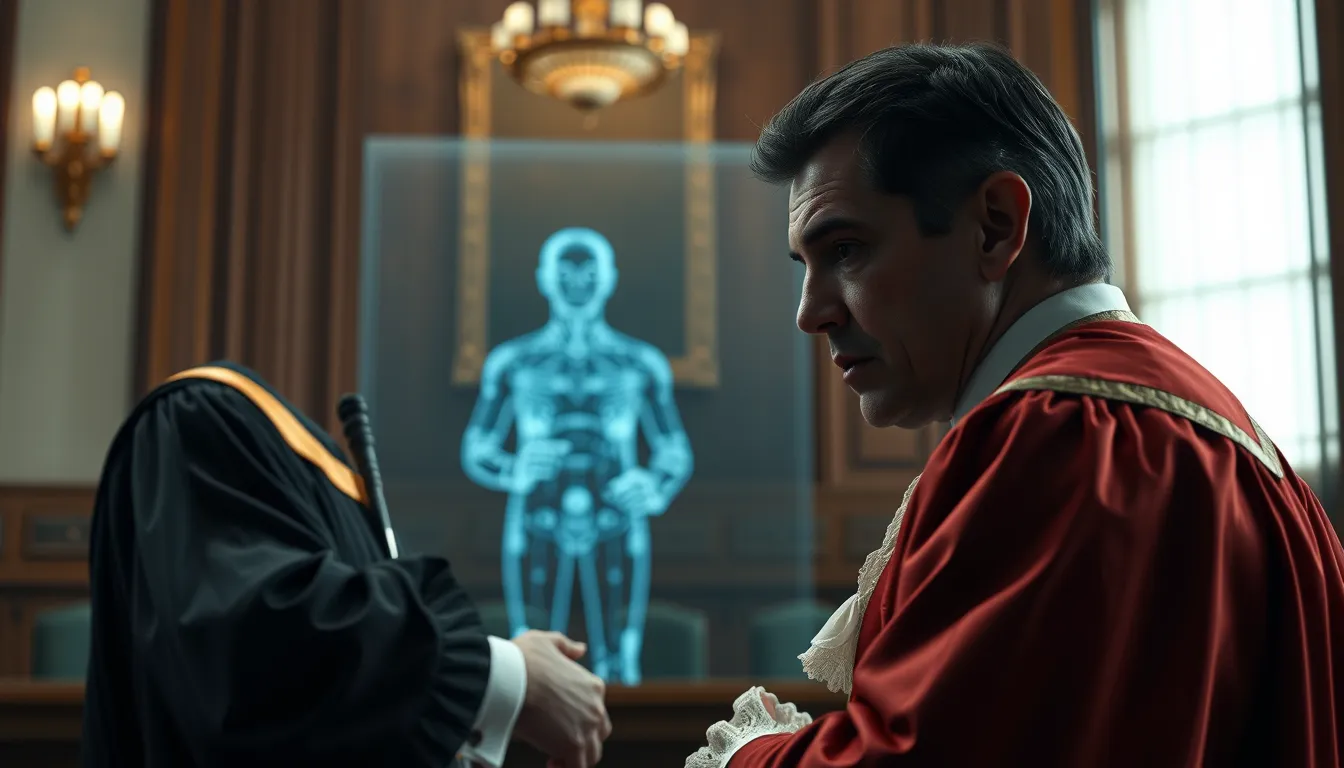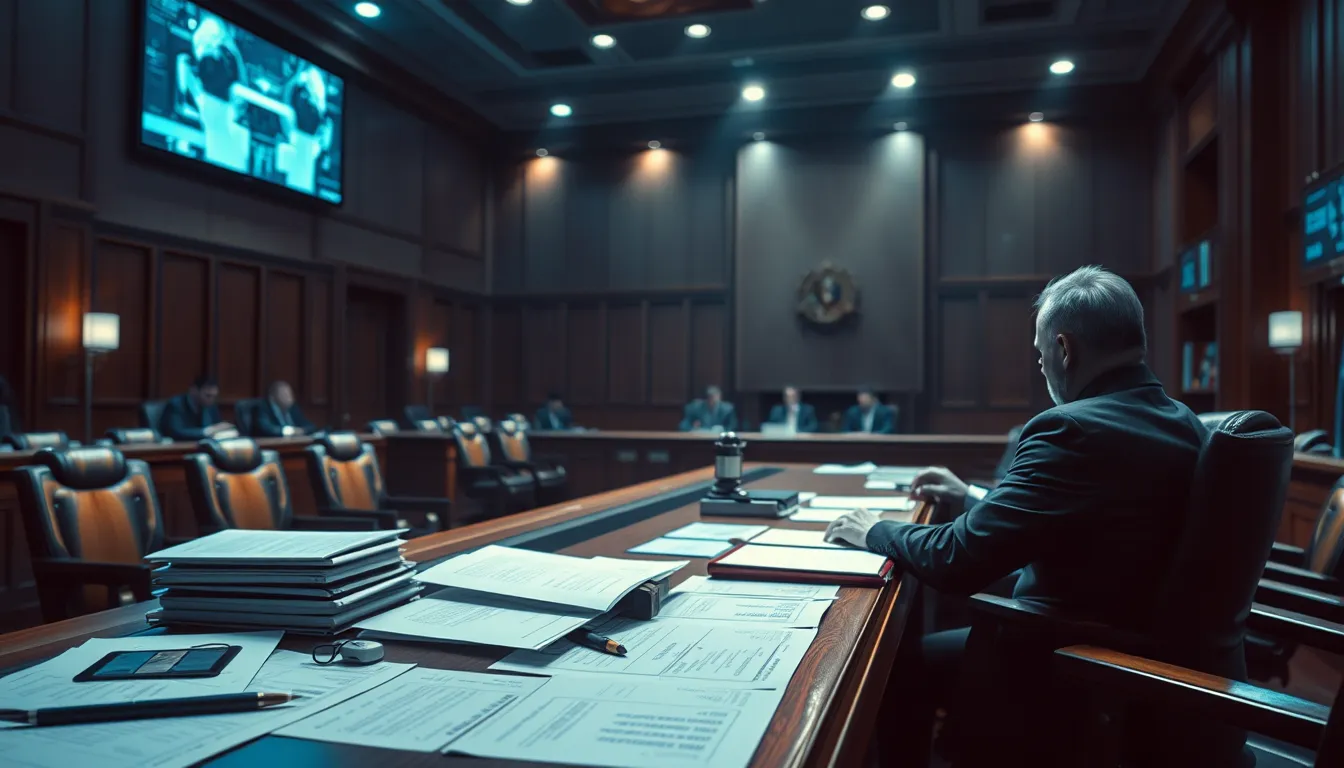Now Reading: AI in Legal Proceedings: Balancing Innovation & Ethics
-
01
AI in Legal Proceedings: Balancing Innovation & Ethics
AI in Legal Proceedings: Balancing Innovation & Ethics

AI in Legal Proceedings: Balancing Innovation & Ethics
In recent legal debates, the integration of artificial intelligence into judicial settings has become a focal point of discussion. The case of an AI entrepreneur attempting to introduce a computer-generated lawyer in court has brought attention to the challenges and opportunities presented by AI in legal proceedings. This article explores the nuances of this debate, delving into the ethical ramifications, technological trends, and potential future of AI in legal representation.
Overview of a Groundbreaking Case
A recent incident in a New York courtroom has ignited national interest in the application of artificial intelligence within the legal system. During the proceedings, a judge openly criticized the attempt to use a computer-generated lawyer—a digital avatar designed to offer legal arguments during trial. The entrepreneur behind this initiative argued that adopting a virtual legal assistant could streamline judicial processes and lower costs, but the judge was quick to point out the inherent risks. The case exemplifies the tension between innovation and tradition, raising important questions about accountability, ethics, and competency in legal settings.
The Ethical Ramifications of AI in Courtroom
One of the primary concerns in this debate involves the ethical ramifications of AI in courtroom scenarios. Critics argue that replacing human judgment with automated processes undermines the ethical foundations of legal practice. The longstanding belief is that a courtroom requires human empathy, ethical insight, and the professional training that only a live attorney can offer. When a judge responds sharply to an AI-generated lawyer, it highlights the challenges associated with entrusting sensitive legal decisions to machines. Key points include:
- The risk of misinterpretation of nuanced legal arguments.
- Challenges in maintaining confidentiality and client trust.
- The potential dilution of accountability if a machine error occurs.
These ethical concerns are amplified by the growing trend of incorporating technology into traditional legal processes. As the industry evolves, establishing clear guidelines for AI implementation becomes imperative.
Technological Trends in Legal Practice
Emerging legal technology trends point toward an increased interest in incorporating AI within courtroom procedures. Terms such as courtroom AI and virtual legal assistant are becoming commonplace as legal professionals seek to balance innovation with the integrity of legal processes. For instance, computer-generated lawyer systems are being evaluated not only for their potential to reduce delays but also for their role in leveling the playing field for underrepresented communities. However, this modern approach carries significant challenges.
- The integration of advanced algorithms to predict legal outcomes and streamline case management.
- The increased use of virtual legal assistants to aid in document review and case research.
- A rising debate over the appropriate level of human oversight in implementing AI tools.
These trends indicate that while the benefits of AI in legal proceedings are promising, careful regulation is necessary. Legal professionals are beginning to call for policies that ensure AI systems complement rather than replace human expertise. For more details on legal standards and ethics, readers can visit the American Bar Association.
Challenges and Opportunities of AI Legal Representation
The case under discussion serves as a reminder of the dual nature of emerging technology. On one hand, AI in legal proceedings offers opportunities to improve efficiency and access to justice. On the other, it presents a host of challenges that must be thoughtfully addressed. Some of the key challenges include:
- Ensuring the transparency of AI decision-making processes.
- Maintaining strict confidentiality and data security.
- Balancing innovation with the need for human oversight in ethical matters.
Moreover, the debate extends to the potential impact on legal employment. As automated systems like computer-generated lawyers become more advanced, there is concern about the displacement of traditional roles in the courtroom. However, advocates for technology emphasize that AI is designed to complement, not replace, human attorneys. This collaboration could allow for greater focus on complex legal reasoning and client communication while AI handles routine tasks.
Looking Ahead: The Future of AI in Legal Proceedings
The integration of artificial intelligence into legal processes is not a question of if, but how. As the debate evolves, stakeholders from both the legal and tech communities are working together to define best practices. The journey ahead involves addressing the ethical ramifications of AI in courtroom scenarios, implementing robust safeguards, and continuously evaluating the impact of emerging legal technology trends.
- Enhanced regulatory frameworks that clearly define the role of AI in legal settings.
- Continued dialogue between technologists, legal experts, and ethicists to shape balanced policies.
- Incremental adoption of AI tools that are closely monitored for performance and ethical compliance.
In conclusion, the conversation about AI in legal proceedings encapsulates the broader tension between embracing innovation and preserving the core values of legal practice. The incident in the New York courtroom is a pivotal example of how technology challenges traditional norms, calling for both caution and forward-thinking. As legal practitioners and policy makers grapple with these issues, the emphasis must remain on ensuring that the adoption of AI enhances the integrity and accessibility of justice without undermining the essential human elements of the legal process.
By addressing both the opportunities and challenges presented by AI, the legal community can pave the way for more effective, efficient, and fair legal proceedings in the future. As this debate continues, it is clear that thoughtful consideration and regulatory oversight will be key to harmonizing technological innovation with the traditional values of the justice system.

























